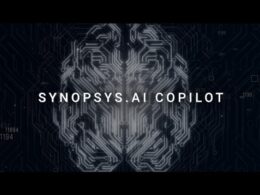The Growing Significance of Generative AI
Enterprises worldwide are relentlessly pursuing the vast potential of generative AI. According to Gartner, within two years, 50% of the board of directors of the world’s top 500 companies will turn to generative AI for various purposes, including ideation, scenario planning, and decision optimization (Gartner). The fear of missing out doesn’t only drive companies to embrace AI; it goes much deeper. Vijoy Pandey, SVP of Outshift by Cisco, points out that generative AI is one of the most crucial technological transitions in recent years. It has the power to revolutionize creativity, productivity, product innovation, and revenue streams. Furthermore, it will redefine these aspects in the future and unlock new and exciting use cases.
The Challenges of Scaling Generative AI
While the potential of generative AI is immense, organizations face numerous challenges in implementing and scaling it effectively. One of the most significant obstacles is managing the complexity and rapid evolution of the AI space. According to Pandey, the fast-paced and diverse nature of this field makes it difficult for companies to keep up (Vijoy Pandey). Additionally, the scarcity of the required skill set poses a barrier to successful adoption, particularly with complex large language models. Most organizations lack prior experience with this technology, which makes deployment and updates complex and challenging.
“The evolution in this space is so rapid, so diverse, and so multi-pronged that it’s hard for anybody to keep up, and to manage the complexity,” says Pandey.
Although small proof-of-concept trials can be easily deployed, scaling generative AI becomes increasingly challenging. Many startups are emerging in the space, but merely producing wrappers and user interfaces for open-source models adds limited value and these companies are likely to fade away (Vijoy Pandey). To achieve long-term success in generative AI, organizations must align their projects with productivity outcomes, creativity outcomes, or the discovery of new revenue streams. However, measuring these outcomes is not possible on a small scale.
“What’s happening right now, folks and organizations are going through proof of concepts, things that are easy, like those wrappers, and see interesting outcomes that have decision-makers saying, ‘let’s just jump.’”
Yet, rolling out a full-scale generative AI initiative with accuracy is a complex task. The entire pipeline poses challenges, starting with data. While some lucky organizations may possess a unified data lake, the majority have data scattered across various sources, formats, and access controls. Consolidating these data fragments into a comprehensive data lake becomes the first major challenge (Vijoy Pandey). Furthermore, the quality of data fed into large language models greatly influences their effectiveness.
“Just because you have data doesn’t mean that it can be used to drive an outcome,” explains Pandey.
Organizations must address data cleanliness, security, and privacy concerns while utilizing generative AI. Privacy becomes particularly delicate as models learn from user interactions, including sensitive and confidential data (Vijoy Pandey). Responsible AI practices are crucial for protecting privacy, eliminating bias, and ensuring explainability to customers.
Choosing the appropriate generative AI model adds another layer of complexity. With a multitude of options available, decision-making can become a slow process. Organizations must evaluate which model to select, whether customization is necessary, how to evaluate and fine-tune the model, and more (Vijoy Pandey). This pipeline requires constant iteration and adaptation due to the ever-changing boundary conditions.
“How do you keep up quickly enough and keep iterating, and still drive a measurable amount of improvement?” queries Pandey.
The scarcity of expertise compounds the challenges in generative AI adoption. Various skill sets are required, such as data science, application science, and MLOps. Finding professionals well-versed in these areas is difficult due to the novelty of the technology (Vijoy Pandey). Consequently, deployment, updates, and management of generative AI solutions become intricate tasks.
Another crucial consideration is the cost of implementing generative AI. It incurs expenses during the initial setup and ongoing operations. Every user interaction and request carries a cost. Furthermore, the compute power necessary to run generative AI solutions requires costly hardware. For newer players in the field, understanding the true costs is imperative for embarking on generative AI projects or services (Vijoy Pandey). Open AI, for instance, reportedly lost $540 million due to computing costs.
“The answer to the complexity of enterprise gen AI is relatively simple,” suggests Pandey. The key lies in identifying what sets an organization apart and leveraging own proprietary data and subject matter expertise. Determining the value proposition of generative AI projects is essential to excel in this space.
“It’s thinking about where you can add value as an organization or as an individual,”
Pandey also emphasizes the necessity of adopting a software-centric approach in tackling generative AI challenges. This strategy helps manage complexity effectively by implementing software frameworks and abstraction layers. These frameworks enable standardization, measurement, bias elimination, security management, and quick iteration for improved outcomes (Vijoy Pandey). Organizations must focus on specific use cases and excel in their chosen areas to drive success. It is not necessary to venture into all possibilities, but instead, to strategically select the areas that align with their expertise.
As Pandey concludes, AI and generative AI have irrevocably changed the global market. To avoid being left behind, organizations must prioritize AI and integrate it into their digital transformation strategies. However, the journey is not without challenges, and KPIs must be established to ensure success.
“All digital transformation moving forward should be AI-focused, and AI-first. If you’re not doing that, then you’re getting left behind,”
Pandey encourages organizations to immerse themselves in the possibilities of generative AI and not be deterred by the complexities. As technology evolves, it will become simpler, more cost-effective, accurate, and inclusive. This step-change will reshape productivity, creativity, and innovation, and organizations must seize this opportunity to excel in their areas of expertise.
“You don’t want to be left behind,” Pandey urges.










